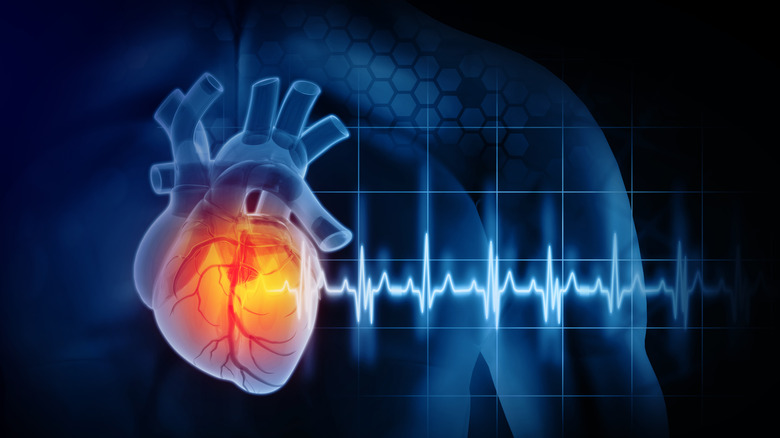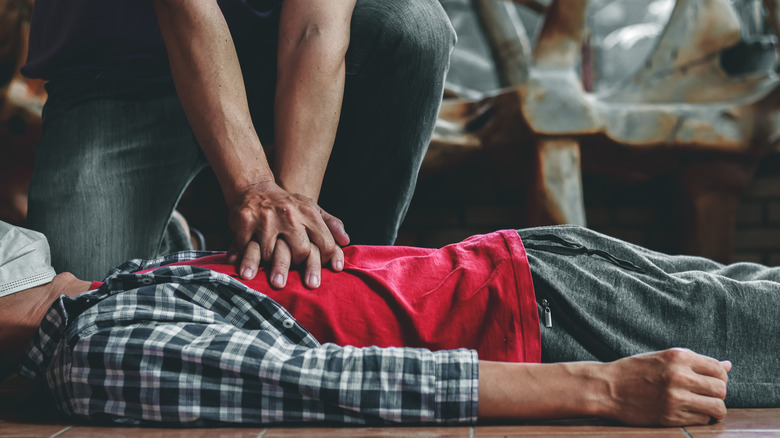What Is Cardiac Arrest?
When it comes to heart problems, there are many different medical conditions that fall under this umbrella term. Stroke, cardiovascular disease, heart attack, arrhythmias, the list goes on (via National Heart, Lung, and Blood Institute). As a result, it can be hard to understand the difference between them all. Let's start by clarifying one condition in particular — cardiac arrest.
Cardiac arrest is responsible for the death of up to 450,000 people annually across the country, reports the National Heart, Lung, and Blood Institute. As per the American Heart Association (AHA), sudden cardiac arrest is different from a heart attack. The condition is characterized by the abrupt stopping of the heart due to an arrhythmia, or irregular heartbeat. Without blood flow to our most essential organs, death is often imminent in 90% of people who experience out-of-hospital cardiac arrest (via National Heart, Lung, and Blood Institute). Experts at Johns Hopkins Medicine note that there are not always symptoms precipitating sudden cardiac arrest. In some cases, however, individuals may experience dizziness, chest pain, shortness of breath, nausea, heart palpitations, or may be unresponsive due to loss of consciousness.
Treatment and prevention against cardiac arrest
Certain factors may increase one's likelihood of experiencing sudden cardiac arrest, such as a family medical history of the condition, drug or alcohol use, hypertension, high cholesterol, smoking, and certain nutritional deficiencies, amongst other risk factors, reports Johns Hopkins Medicine.
Immediate medical intervention is needed in the event that a person experiences cardiac arrest. After calling 911, the person will require CPR until emergency services arrive in order to boost circulation. Emergency responders will then use a defibrillator to shock the patient's heart back to its healthy rhythm. Conversely, bystanders may use an automated external defibrillator (AED) machine on the person in need. Often available in public places, the machine will issue an electric shock to the person's heart if needed after measuring their heart rhythm.
While experts highlight the importance of exercise and a healthy diet in protection against cardiac arrest, health experts also acknowledge the role that doctors play in prevention by being on the lookout for patient risk factors. "The first line of defense may likely be the primary care physician, whether an internist or family practitioner," Dr. Eric N. Prystowsky, Director of the Clinical Electrophysiology Laboratory at St. Vincent Hospital in Indiana, told Medscape.


